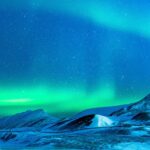Palau, an archipelago nation in the western Pacific Ocean, is a paradise for nature lovers, historians and adventure seekers. Places to visit on Palau Island are full of unspoiled beaches, azure waters, and stunning marine biodiversity. It provides some of the finest diving and snorkelling in the world and also boasts limestone islands, ancient cultural sites and unique natural wonders. Some sites are a testament to the efforts and commitment made by Palau to preserve and protect both its natural and cultural heritage. Whether discovering colourful coral reefs, trekking through verdant jungles, or learning about Palau’s indigenous traditions, each island destination provides something different.
10 Best Places To Visit On Palau Island
A visit to Palau is a step into one of the last real tropical paradises of the Pacific. Places to visit on Palau island have plenty of cultures, from sites of some World War II battles to traditional Palauan villages and archaeological sites.
1. Rock Islands Southern Lagoon
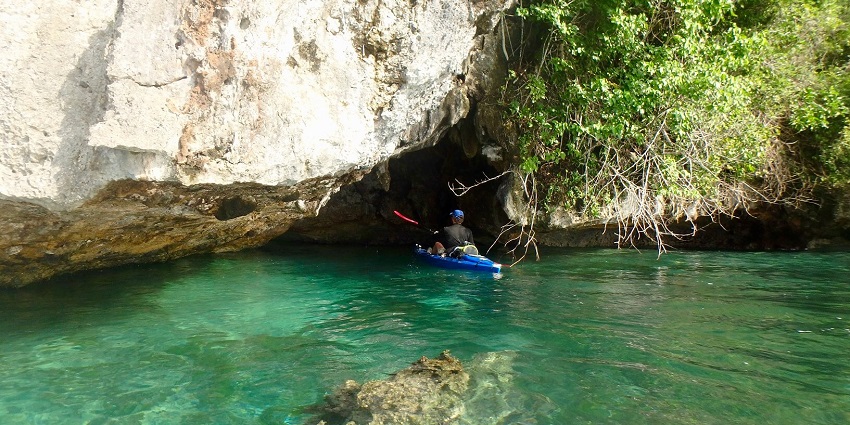
Photo: Dbuges33 / Wikimedia Commons / Image For Representation Only
The Rock Islands Southern Lagoon is a UNESCO World Heritage Site, recognised for its stunning beauty, unusual ecosystems and outstanding marine biodiversity. Stretched over 100,000 hectares, this collection of limestone islands is lush with vegetation and surrounded by clear blue waters. The islands are filled with concealed coves, caves and some of the best diving and snorkelling in the world. It’s also the site of ancient petroglyphs and archaeological sites, providing insight into Palau’s early settlers. The Rock Islands Southern Lagoon is a must-see among other places to visit on Palau Island for adventurers and nature lovers alike with its pristine landscapes and rich marine life.
Location: Southwest of Koror
Best Time To Visit: November to April
Nearby Attractions: Jellyfish Lake, Milky Way Lagoon, Long Beach, Blue Corner
2. Jellyfish Lake
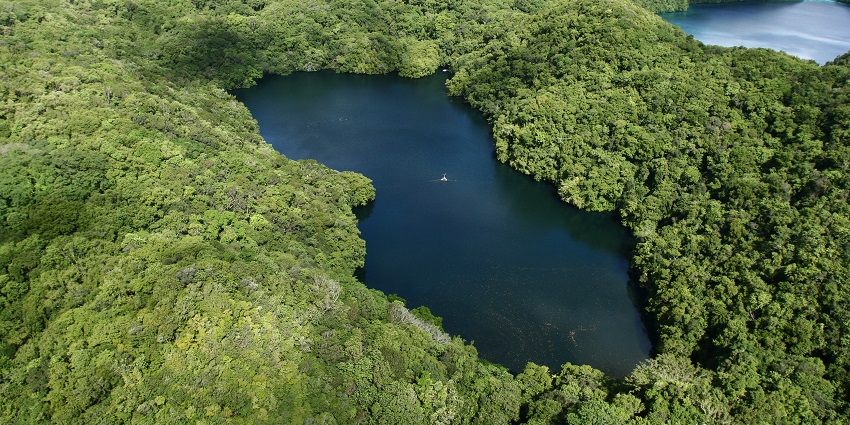
Photo: Lukas / Wikimedia Commons
Jellyfish Lake is one of the most bizarre and incredible places to visit on Palau Island. This marine lake on Eil Malk Island is inhabited by millions of golden jellyfish that evolved to lose their stinging ability in the absence of natural predators. The lake itself is an ancient ecosystem, cut off from the ocean for millennia and you can swim with these harmless jellyfish for an unforgettable experience. It is an important site for scientists interested in marine evolution and biodiversity. The surrounding landscape comprises thick forests and limestone formations, enhancing the lake’s mystique.
Location: Eil Malk Island
Best Time To Visit: November to April
Nearby Attractions: Milky Way Lagoon, Soft Coral Arch
3. Ngardmau Waterfall

Photo: Abasaa / Wikimedia Commons
Nestled in the central part of Babeldaob Island, Ngardmau Waterfall is the tallest and most spectacular waterfall in all of Palau. It gracefully falls from about 30 meters high, surrounded by lush jungle in a serene, picturesque area. Getting to the falls necessitates a trek through the rainforest and ancient ruins, small streams, and lush vegetation. A zip line across the jungle gives a thrilling view from above. For a refreshing dip after this hike, the pool beneath the waterfall is an excellent natural pool to cool off. So, whether you are there for a hike, to swim at the natural pool, or just to enjoy the beautiful nature, Ngardmau Waterfall is one of the must-explore places to visit on Palau Island.
Location: Babeldaob Island
Best Time To Visit: Year-round
Nearby Attractions: Mount Ngerchelchuus, Badrulchau Stone Monoliths
4. Belau National Museum
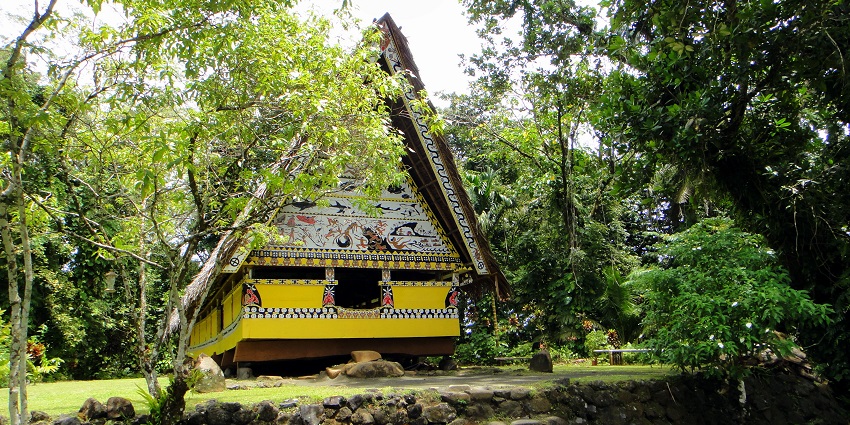
Photo: Matt Kieffer / Wikimedia Commons / Image For Representation Only
Belau National Museum in Koror is Palau’s oldest museum and houses an incredible array of artefacts that tell the story of the local culture and history. Founded in 1955, the museum holds a significant collection of artefacts, including traditional tools, ancient pottery, historic photographs and displays about Palauan customs and beliefs. One of its highlights is a traditional Palauan bai (meeting house), which sits outside the museum and has walls and roofs beautifully adorned with symbolic carvings. The museum also showcases Palau’s colonial history under Spanish, German, Japanese and American rule, offering visitors a deep dive into the country’s historical evolution. It also has a botanical garden of native plants and an art gallery of contemporary Palauan art. A visit to the museum is a great way to appreciate Palau’s rich culture and history and a great stop for those who are looking to learn more about this unique island nation.
Location: Koror
Timings: 9 AM – 4 PM
Nearby Attractions: Etpison Museum, Palau Aquarium
5. Peleliu Island
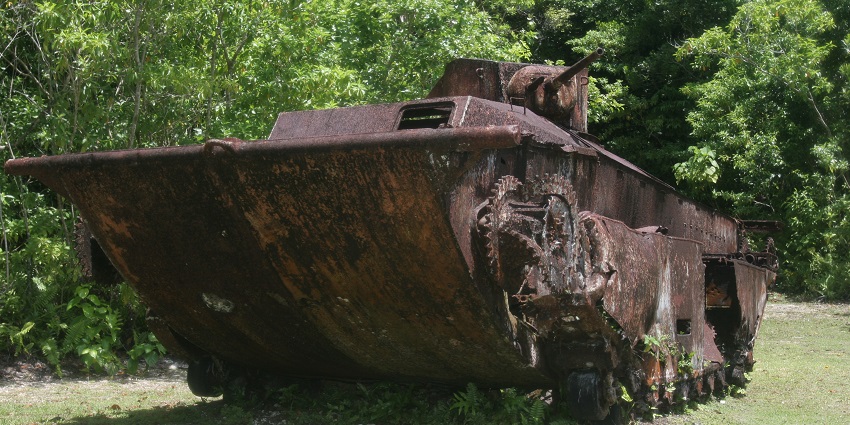
Photo: Cpl. Juan D. Alfonso / Wikimedia Commons / Image For Representation Only
If you are up for a little history, consider a visit to Peleliu Island, where one of the bloodiest battles of World War II took place. The 1944 Battle of Peleliu was fought between American and Japanese armies and resulted in many remnants left behind, such as war bunkers, tanks and memorials. Today you can tour the battlefield, visit the Peleliu WWII Memorial Museum and walk through the haunting 1,000 Man Cave, an underground passage Japanese soldiers used. Apart from its historical importance, Peleliu has unspoiled beaches, colourful coral reefs and terrific diving sites for sunken wrecks from the war.
Location: South of Koror
Best Time To Visit: November to April
Nearby Attractions: Orange Beach, Peleliu WWII Memorial Museum
6. Milky Way Lagoon
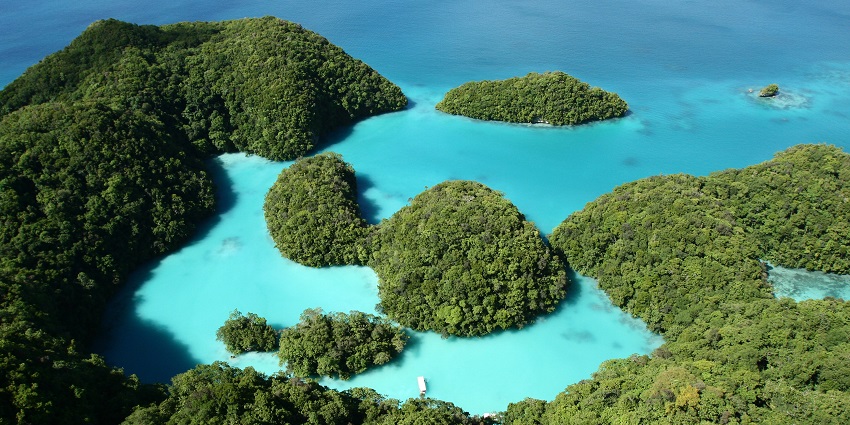
Photo: LuxTonnerre / Wikimedia Commons
One of the most sought-after natural marvels is the Milky Way Lagoon in the Rock Islands, internationally recognised for its turquoise waters and exotic seafloor white limestone mud. This mineral-heavy mud hails directly from nature and is said to offer exfoliating and skin-rejuvenating benefits. Guests often slather themselves in mud and then rinse off in the pristine waters. This lagoon is framed by lush rock formations, making for a secluded and tranquil atmosphere. The lagoon is accessible only by boat due to its remote location, which also makes it a quieter getaway from the more popular places to visit on the Palau Island.
Location: Rock Islands
Best Time To Visit: Year-round
7. Badrulchau Stone Monoliths

Photo: Abasaa / Wikimedia Commons
Palau’s most enigmatic archaeological sites are the Badrulchau Stone Monoliths. Situated in northern Babeldaob Island, the site comprises 37 large basalt monoliths, with some being over 3 meters tall. Archaeologists believe they formed part of an ancient bai (meeting house) or a ceremonial complex dating back thousands of years. Unknown origin and unknown purpose, the monoliths continue to intrigue and evoke speculation. Some stones have carvings, implying they were of cultural or religious importance. The land is perched over the coast, offering beautiful views of the ocean and with traditional Palauan villages and verdant expanses surrounding the area, increasing its cultural allure.
Location: Northern Babeldaob Island
Best Time To Visit: Year-round
Nearby Attractions: Ngardmau Waterfall, Japanese Lighthouse
8. Etpison Museum
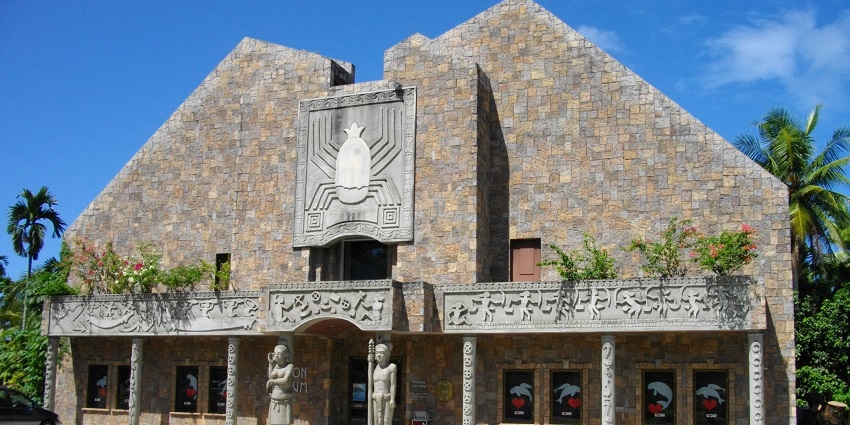
Photo: Abasaa / Wikimedia Commons
The Etpison Museum is a privately managed facility located in Koror that focuses on the preservation and display of Palauan culture, history, and art. Named after the late President Ngiratkel Etpison, the museum opened in 1999 and features an impressive array of historical artefacts, model canoes, traditional tools and other handcrafted items. It also features exhibits on Palau’s marine biodiversity, with preserved marine species, as well as educational material about coral reef conservation. One of the best parts of the museum is its collection of unusual shell money, which was once used as currency in Palau.
Location: Koror
Timings: 9 AM – 5 PM
Nearby Attractions: Belau National Museum, WCTC Shopping Center
9. Kayangel Atoll
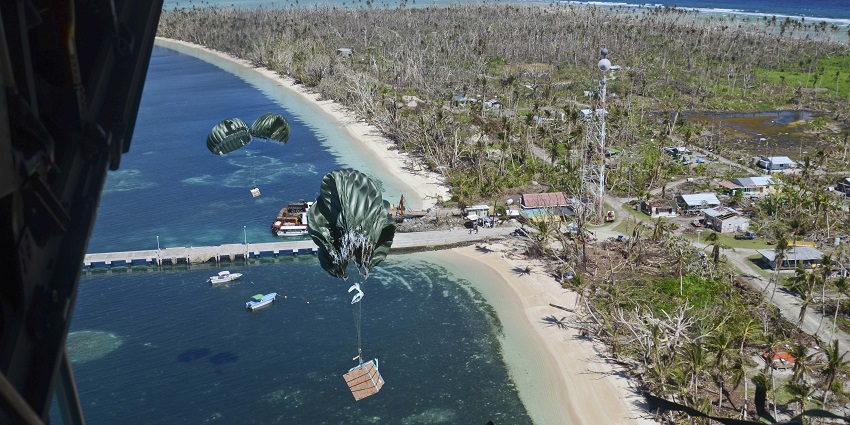
Photo: SrA Marianique Santos / Wikimedia Commons
Kayangel Atoll is Palau’s northernmost island state, famed for its pristine beauty, azure waters, and rich marine life. This remote paradise is made up of four small islands surrounding a central lagoon, only one of which is inhabited by a small fishing community. You can savour unmarked beaches, snorkelling over vibrant coral reefs, and deep-sea fishing. Two rare bird species and sea turtles on the atoll make it a prime location for nature enthusiasts. There is no commercial tourism, and that’s what keeps its wild beauty intact, offering a quiet retreat from the busier places to visit on Palau Island.
Location: Northernmost state of Palau
Best Time To Visit: November to April
Nearby Attractions: Ngeruangl Island, Shark City Dive Site
10. German Channel
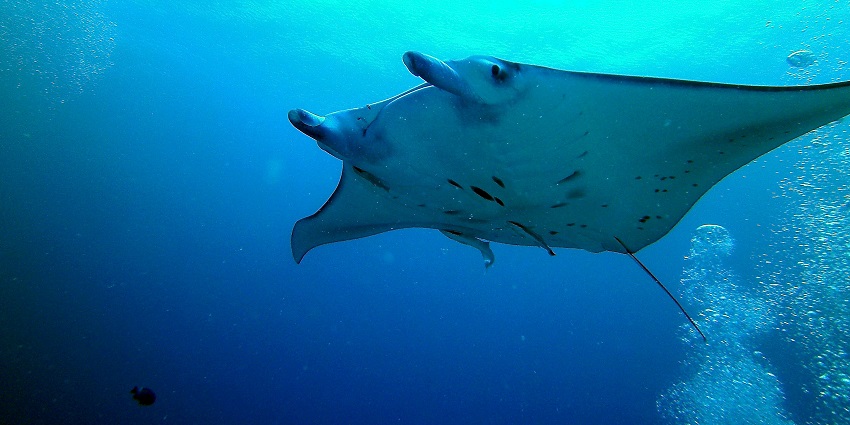
Photo: amanderson2 / Wikimedia Commons
The German Channel, one of Palau’s top dive sites, was originally dredged by German colonists in the early 1900s. It has developed into a flourishing marine ecosystem over the years, famously known as a feeding and cleaning station for manta rays. Depending on locations, divers can observe these gentle giants swimming through the waters, stopping occasionally at coral cleaning stations, where tiny fish eat the parasites off their skin. The site also hosts reef sharks, barracudas, snappers and colourful coral formations. Strong currents make the German Channel very well suited for intermediate to advanced divers and the best conditions can be found during the incoming tides, when plankton-rich waters attract marine life in large numbers.
Location: Near Koror
Best Time To Visit: November to April
Nearby Attractions: Blue Corner, Ulong Channel, Siaes Tunnel
Places to visit on Palau Island are an experience that is truly a cut above the rest. Whether you’re diving with manta rays, wandering ancient stone monoliths, or kicking back on a hidden beach, Palau has adventure and serenity to spare. Because of its deep commitment to conservation, the island nation safeguards its beautiful landscapes and marine ecosystems to ensure their preservation for future generations. Explore Palau with the best itinerary on TripXL and start your journey to this tropical paradise.
Cover Photo: Luka Peternel / Wikimedia Commons


 WhatsApp
WhatsApp
 Twitter
Twitter

